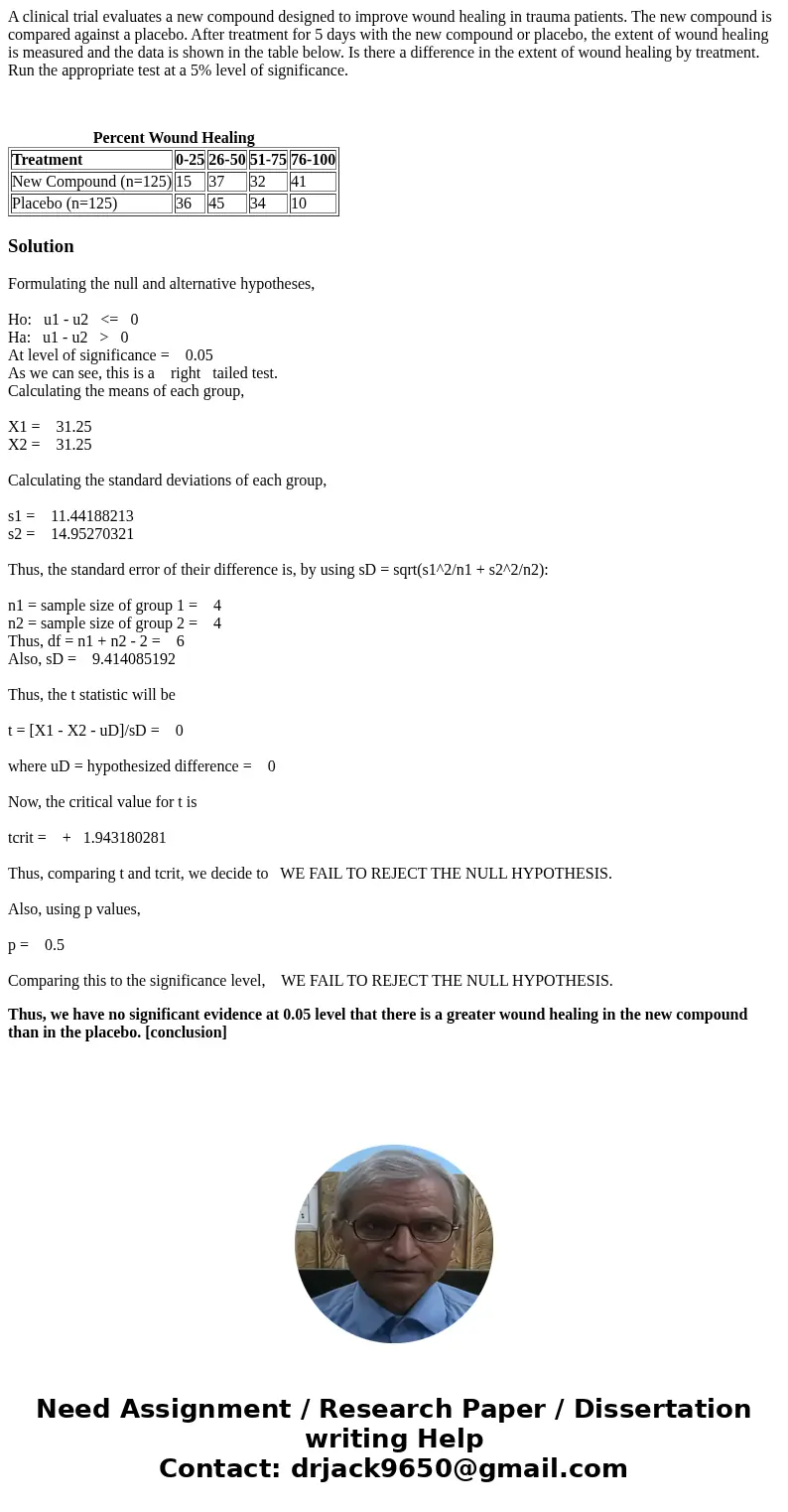A clinical trial evaluates a new compound designed to improv
A clinical trial evaluates a new compound designed to improve wound healing in trauma patients. The new compound is compared against a placebo. After treatment for 5 days with the new compound or placebo, the extent of wound healing is measured and the data is shown in the table below. Is there a difference in the extent of wound healing by treatment. Run the appropriate test at a 5% level of significance.
| Treatment | 0-25 | 26-50 | 51-75 | 76-100 |
| New Compound (n=125) | 15 | 37 | 32 | 41 |
| Placebo (n=125) | 36 | 45 | 34 | 10 |
Solution
Formulating the null and alternative hypotheses,
Ho: u1 - u2 <= 0
Ha: u1 - u2 > 0
At level of significance = 0.05
As we can see, this is a right tailed test.
Calculating the means of each group,
X1 = 31.25
X2 = 31.25
Calculating the standard deviations of each group,
s1 = 11.44188213
s2 = 14.95270321
Thus, the standard error of their difference is, by using sD = sqrt(s1^2/n1 + s2^2/n2):
n1 = sample size of group 1 = 4
n2 = sample size of group 2 = 4
Thus, df = n1 + n2 - 2 = 6
Also, sD = 9.414085192
Thus, the t statistic will be
t = [X1 - X2 - uD]/sD = 0
where uD = hypothesized difference = 0
Now, the critical value for t is
tcrit = + 1.943180281
Thus, comparing t and tcrit, we decide to WE FAIL TO REJECT THE NULL HYPOTHESIS.
Also, using p values,
p = 0.5
Comparing this to the significance level, WE FAIL TO REJECT THE NULL HYPOTHESIS.
Thus, we have no significant evidence at 0.05 level that there is a greater wound healing in the new compound than in the placebo. [conclusion]

 Homework Sourse
Homework Sourse